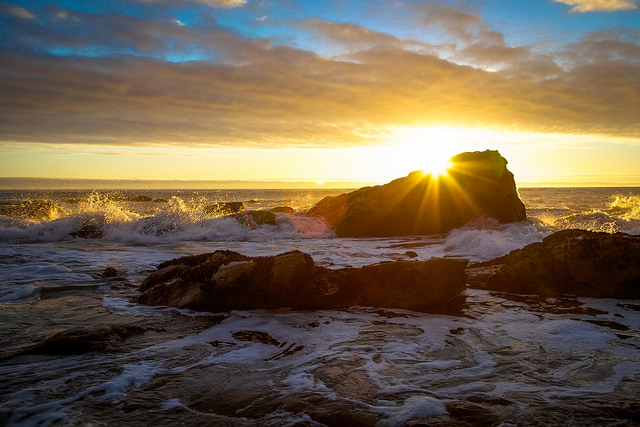
Celebrating 46 Years of the National Marine Sanctuaries Act
By: Kris Sarri, President and CEO of the National Marine Sanctuary Foundation
On October 23, 1972, the National Marine Sanctuaries Act became law, allowing the Secretary of Commerce to designate and protect nationally significant areas in the ocean and Great Lakes. Forty- six years later, the National Marine Sanctuary System is a network of 13 marine sanctuaries and two marine national monuments spanning more than 600,000 miles of American waters.
Today, we celebrate this groundbreaking legislation and the communities who advocated for the protection of their wondrous waters. Each of the sites, stretching from American Samoa to the Pacific Northwest, and from the Florida Keys to Michigan sustain miraculous species, coastal communities, and our shared heritage. While they are all unique, they have a number of things in common. They are listening posts for our global ocean, their protection allows us to understand changes in the environment, and each sanctuary is a treasured place that gives us the opportunity to connect with the natural world. And they belong to all of us, continuing to exist and thrive only because of the individuals, communities, and organizations who champion their successes.
Here at the National Marine Sanctuary Foundation, we celebrate the National Marine Sanctuary System. We champion the continued protection of these amazing places, strive to connect people to their sanctuaries and broader ocean conservation, and advocate for the designation of new sites and expansion of existing ones.
Join us in exploring and celebrating the wonders of the National Marine Sanctuary System:
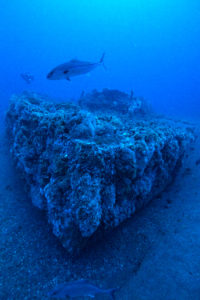 Monitor National Marine Sanctuary (NMS) is America’s first national marine sanctuary and the final resting place of the Civil War-era ironclad ship, USS Monitor. When a New Year’s Eve storm raged down the coast of North Carolina in 1862, Monitor was lost, a little less than a year after she was launched. It wasn’t until 1973 that the ship was discovered, and on January 30, 1975, it received protection. In 2016, following several years of archaeological research, NOAA proposed and solicited public input on a proposal to expand Monitor National Marine Sanctuary to include a collection of nearby World War II shipwrecks known as the “Graveyard of the Atlantic.”
Monitor National Marine Sanctuary (NMS) is America’s first national marine sanctuary and the final resting place of the Civil War-era ironclad ship, USS Monitor. When a New Year’s Eve storm raged down the coast of North Carolina in 1862, Monitor was lost, a little less than a year after she was launched. It wasn’t until 1973 that the ship was discovered, and on January 30, 1975, it received protection. In 2016, following several years of archaeological research, NOAA proposed and solicited public input on a proposal to expand Monitor National Marine Sanctuary to include a collection of nearby World War II shipwrecks known as the “Graveyard of the Atlantic.”
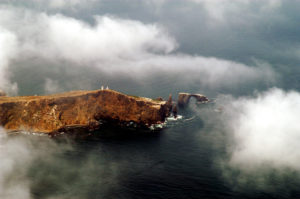
Channel Islands NMS, designated in 1980, is a special place for protected species, sensitive habitats, shipwrecks, and maritime heritage artifacts. The site encapsulates the Anacapa, Santa Cruz, Santa Rosa, San Miguel and Santa Barbara islands, five of eight channel islands off the coast of Santa Barbara, CA. The waters that surround the five islands within the sanctuary combine warm and cool currents to create a biodiverse feeding and breeding ground for many species of plants and animals. Every year, over 27 species of whales and dolphins visit or inhabit the sanctuary including blue, humpback, and sei whales. The islands are valued for their natural beauty and rich species diversity including many endangered and threatened species. Many valuable commercial and recreational activities, such as fishing, shipping, diving, and tourism occur in the sanctuary.
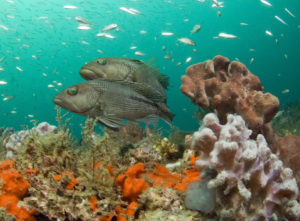 Gray’s Reef NMS off the coast of Savannah, Georgia contains the largest sandstone reefs in the Atlantic ocean. The area’s abounding marine life caught the attention in the 1960s of Milton B. Gray, a biological collector and curator at the University of Georgia Marine Institute; the sanctuary was named in his honor. The reef is known informally as a “live bottom habitat,” a term that recognizes the living wreath of coral and marine invertebrates that spreads across the reef. It received sanctuary status in 1981.
Gray’s Reef NMS off the coast of Savannah, Georgia contains the largest sandstone reefs in the Atlantic ocean. The area’s abounding marine life caught the attention in the 1960s of Milton B. Gray, a biological collector and curator at the University of Georgia Marine Institute; the sanctuary was named in his honor. The reef is known informally as a “live bottom habitat,” a term that recognizes the living wreath of coral and marine invertebrates that spreads across the reef. It received sanctuary status in 1981.
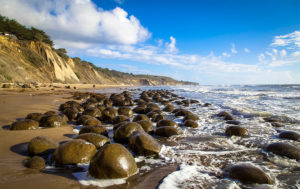 Greater Farallones NMS, originally designated in 1981, currently spans 3,295 square miles. Just north and west of San Francisco Bay, protecting estuarine wetlands, subtidal reefs, coastal beaches, open ocean, nearshore tidal flats and rocky intertidal areas, shipwrecks, and other cultural resources. Its vast and diverse topography along with its major currents and a high degree of wind-driven upwelling creates a nutrient-rich environment that makes it one of the most biologically productive regions in the world. The sanctuary is home to thousands of seals and sea lions, as well as the largest concentration of breeding seabirds in the continental United States.
Greater Farallones NMS, originally designated in 1981, currently spans 3,295 square miles. Just north and west of San Francisco Bay, protecting estuarine wetlands, subtidal reefs, coastal beaches, open ocean, nearshore tidal flats and rocky intertidal areas, shipwrecks, and other cultural resources. Its vast and diverse topography along with its major currents and a high degree of wind-driven upwelling creates a nutrient-rich environment that makes it one of the most biologically productive regions in the world. The sanctuary is home to thousands of seals and sea lions, as well as the largest concentration of breeding seabirds in the continental United States.
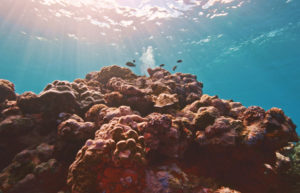 National Marine Sanctuary of American Samoa, which includes Rose Atoll Marine National Monument, was designated in 1986 and is now the System’s largest sanctuary, and its most remote. This is a place of intertwined natural and cultural significance. The sanctuary includes expansive reefs, including some of the oldest and largest Porites coral heads in the world, along with deep water reefs and hydrothermal vent communities. It’s home to 1400 different invertebrates, sea turtles and more than a dozen species of marine mammals, among them humpback whales who visit every winter and dolphins who call the area home year round, not to mention over 950 species of brilliantly colored fish of all shapes and sizes who reside in Samoan waters. The sanctuary also preserves rare maritime heritage resources representing 3000 years of American Samoan history and tradition, from prehistoric villages to historic shipwrecks to military fortifications.
National Marine Sanctuary of American Samoa, which includes Rose Atoll Marine National Monument, was designated in 1986 and is now the System’s largest sanctuary, and its most remote. This is a place of intertwined natural and cultural significance. The sanctuary includes expansive reefs, including some of the oldest and largest Porites coral heads in the world, along with deep water reefs and hydrothermal vent communities. It’s home to 1400 different invertebrates, sea turtles and more than a dozen species of marine mammals, among them humpback whales who visit every winter and dolphins who call the area home year round, not to mention over 950 species of brilliantly colored fish of all shapes and sizes who reside in Samoan waters. The sanctuary also preserves rare maritime heritage resources representing 3000 years of American Samoan history and tradition, from prehistoric villages to historic shipwrecks to military fortifications.
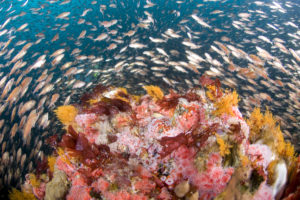
Unique oceanographic features make Cordell Bank NMS a productive and diverse habitat that supports a rich biological community. Designated as a sanctuary in 1989, the coastal upwelling at this sanctuary contributes to a productivity cycle that supports local species as well as migratory sea turtles, fishes, seabirds and marine mammals that travel up to thousands of miles to feed around the bank. The sanctuary is also feeding area for the protected humpback and blue whales, and supports many marine fisheries and wildlife viewing opportunities.

Florida Keys NMS, designated in 1990, is home to one of North America’s most diverse assemblages of flora and fauna in an ecosystem that protects the third largest living coral barrier reef in the world, one the world’s largest seagrass beds and more than 1,800 miles of mangrove shoreline. Its range of habitats are home to more than 6,000 species of plants, fishes, and invertebrates. And, its health is critical to the quality of life and economy of the region.
 Located off the coast of Texas and Louisiana, Flower Garden Banks NMS plays an essential role in understanding and improving the health of the Gulf. Since the discovery of these offshore banks in the early 1900s by snapper fishers, to its nomination by recreational divers in 1979, to its designation as a national marine sanctuary in 1992, Flower Garden Banks has served as a hub of research, science, and exploration. The sanctuary includes the northernmost coral reefs in the continental United States. The reefs and banks of the northwestern Gulf of Mexico support critical deep water habitats, including brilliant reef building corals and sponge assemblages atop underwater mountains, and a stunning bounty of wildlife. And in 2018, with support from the National Marine Sanctuary Foundation, scientists made an amazing discovery in the sanctuary — it is part of a nesting ground for juvenile manta rays.
Located off the coast of Texas and Louisiana, Flower Garden Banks NMS plays an essential role in understanding and improving the health of the Gulf. Since the discovery of these offshore banks in the early 1900s by snapper fishers, to its nomination by recreational divers in 1979, to its designation as a national marine sanctuary in 1992, Flower Garden Banks has served as a hub of research, science, and exploration. The sanctuary includes the northernmost coral reefs in the continental United States. The reefs and banks of the northwestern Gulf of Mexico support critical deep water habitats, including brilliant reef building corals and sponge assemblages atop underwater mountains, and a stunning bounty of wildlife. And in 2018, with support from the National Marine Sanctuary Foundation, scientists made an amazing discovery in the sanctuary — it is part of a nesting ground for juvenile manta rays.
. Hawaiian Islands Humpback Whale NMS protects the only calving and nursing grounds for these amazing creatures in U.S. coastal waters. Hawaiian Islands Humpback Whale National Marine Sanctuary was designated in 1992 to protect the two-thirds (approximately 10,000 whales) of the North Pacific humpback whale population that migrate to the state to breed, calve and nurse their young in the winter months before migrating to cooler waters near Alaska, Canada, and Russia to feed in the summer. The sanctuary is also home to a variety of other marine life including Hawaiian monk seals, seabirds and shorebirds, dolphins, sea turtles, fish, and corals.
Hawaiian Islands Humpback Whale NMS protects the only calving and nursing grounds for these amazing creatures in U.S. coastal waters. Hawaiian Islands Humpback Whale National Marine Sanctuary was designated in 1992 to protect the two-thirds (approximately 10,000 whales) of the North Pacific humpback whale population that migrate to the state to breed, calve and nurse their young in the winter months before migrating to cooler waters near Alaska, Canada, and Russia to feed in the summer. The sanctuary is also home to a variety of other marine life including Hawaiian monk seals, seabirds and shorebirds, dolphins, sea turtles, fish, and corals.
 Monterey Bay NMS protects 6,094 square miles of ocean just south of the San Francisco Bay and extends 30 miles from shore. The sanctuary was designated in 1992 and is renowned for world-class diving, swimming, snorkeling, fishing, and other recreational and tourism activities including wildlife viewing and whale watching. Monterey Bay NMS supports a diversity of flora and fauna including 34 species of marine mammals, more than 180 species of seabirds and shorebirds, at least 525 species of fishes, and an abundance of invertebrates and algae. The sanctuary also contains an estimated 225 documented shipwrecks or lost aircraft and 718 historic sites.
Monterey Bay NMS protects 6,094 square miles of ocean just south of the San Francisco Bay and extends 30 miles from shore. The sanctuary was designated in 1992 and is renowned for world-class diving, swimming, snorkeling, fishing, and other recreational and tourism activities including wildlife viewing and whale watching. Monterey Bay NMS supports a diversity of flora and fauna including 34 species of marine mammals, more than 180 species of seabirds and shorebirds, at least 525 species of fishes, and an abundance of invertebrates and algae. The sanctuary also contains an estimated 225 documented shipwrecks or lost aircraft and 718 historic sites.
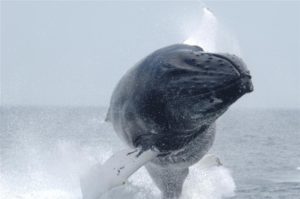 Stellwagen Bank NMS off the coast of Massachusetts is one of the most popular whale watching and wildlife viewing destinations in the world. The sanctuary, designated in 1992, was once dry land where mammoth and mastodon roamed. Today, it is best known for its rich and diverse ecosystem, home to flatfish, seabirds, and a number of marine mammals. It is one of America’s oldest commercial fishing grounds and contributes significantly to the local economy.
Stellwagen Bank NMS off the coast of Massachusetts is one of the most popular whale watching and wildlife viewing destinations in the world. The sanctuary, designated in 1992, was once dry land where mammoth and mastodon roamed. Today, it is best known for its rich and diverse ecosystem, home to flatfish, seabirds, and a number of marine mammals. It is one of America’s oldest commercial fishing grounds and contributes significantly to the local economy.
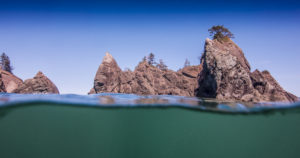 Adjacent to Olympic National Park off the rugged Olympic Peninsula coastline lies Olympic Coast NMS, designated in 1994. Along its shores are thriving kelp and intertidal communities, and in its depths are deep sea coral and sponges, that form habitats for fish and other important marine wildlife. The sanctuary has a rich cultural and historical legacy. The Makah Tribe, Quileute Tribe, Hoh Tribe, and Quinault Nation forged inseparable ties to the ocean environment, maintaining traditions of the past while they navigate the changes of the present.
Adjacent to Olympic National Park off the rugged Olympic Peninsula coastline lies Olympic Coast NMS, designated in 1994. Along its shores are thriving kelp and intertidal communities, and in its depths are deep sea coral and sponges, that form habitats for fish and other important marine wildlife. The sanctuary has a rich cultural and historical legacy. The Makah Tribe, Quileute Tribe, Hoh Tribe, and Quinault Nation forged inseparable ties to the ocean environment, maintaining traditions of the past while they navigate the changes of the present.
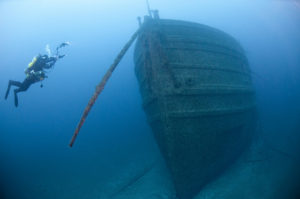 For over 12,000 years, people have traveled on the Great Lakes. From Native American dugout canoes to wooden sailing craft and steel freighters, thousands of ships made millions of voyages across the Great Lakes. Maritime commerce transformed the region into one of the world’s busiest waterways. Thunder Bay National Marine Sanctuary in Lake Huron, is adjacent to one of the most treacherous stretches of water within the Great Lakes system. Known as Shipwreck Alley, is the final resting place for over 200 known historic shipwrecks, 100 of which have been identified. Thunder Bay was designated in 2000 and expanded in 2014.
For over 12,000 years, people have traveled on the Great Lakes. From Native American dugout canoes to wooden sailing craft and steel freighters, thousands of ships made millions of voyages across the Great Lakes. Maritime commerce transformed the region into one of the world’s busiest waterways. Thunder Bay National Marine Sanctuary in Lake Huron, is adjacent to one of the most treacherous stretches of water within the Great Lakes system. Known as Shipwreck Alley, is the final resting place for over 200 known historic shipwrecks, 100 of which have been identified. Thunder Bay was designated in 2000 and expanded in 2014.
